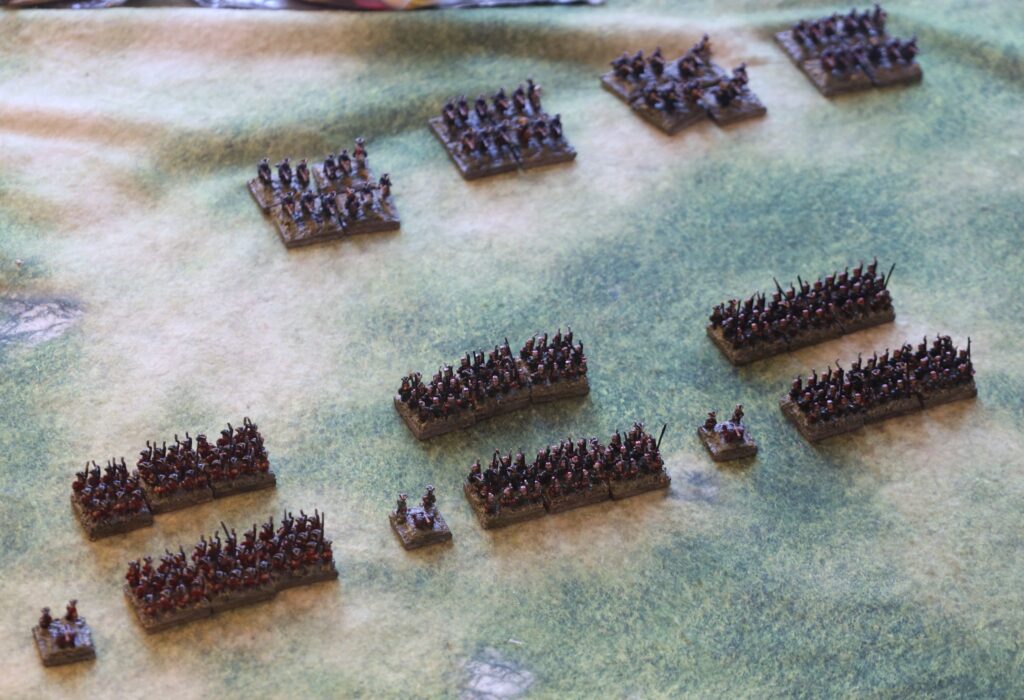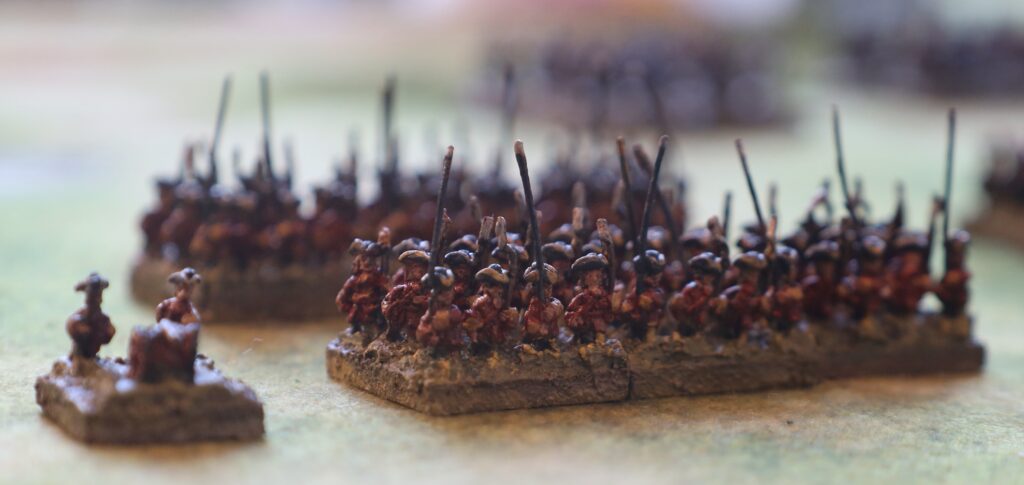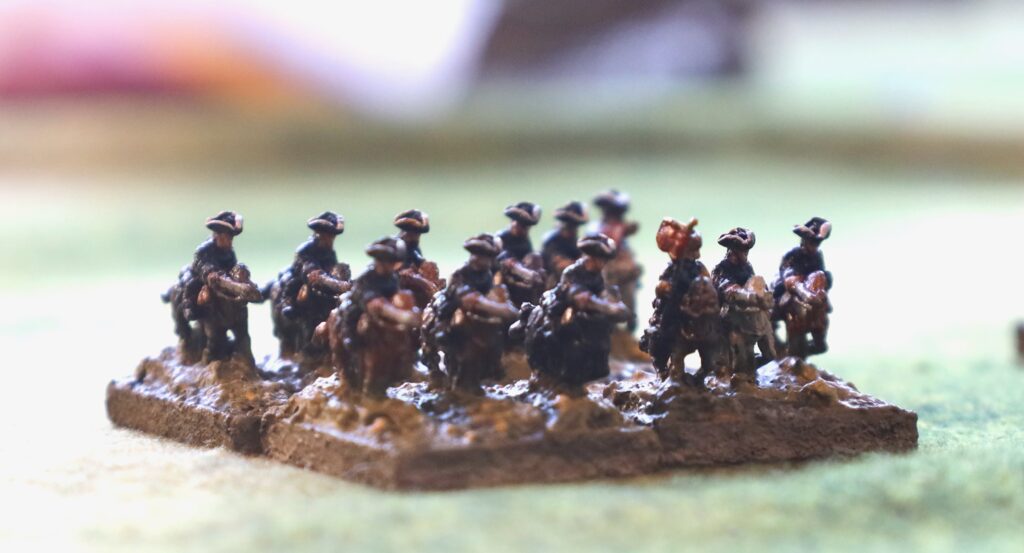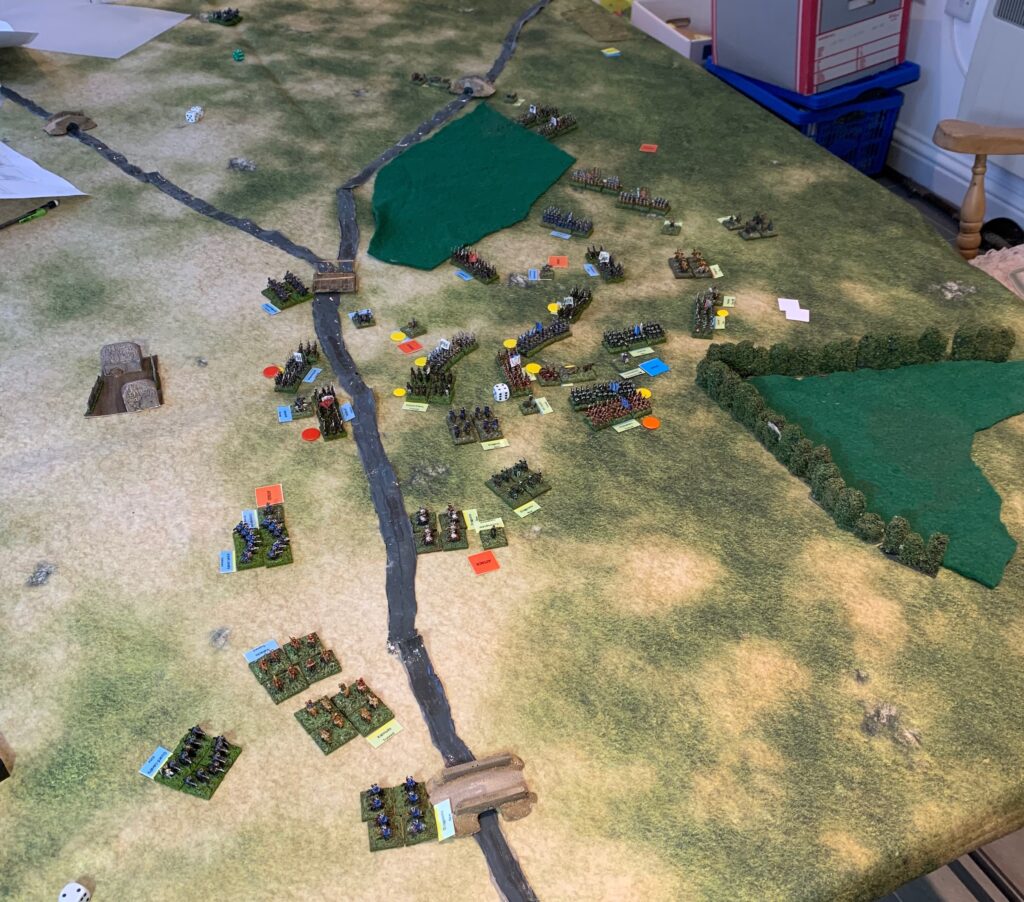
How time flies! It’s been quite a while since I last posted. My hobby focus has been mainly on my Great Northern War project – though as usual the rest of life intervened to limit the time spent on it. I developed my Carolus Rex rules ready for a proper live game in April. Since then I have modified them, and they are now published on here the Rules Page. I have also painted up six more infantry units (mostly Swedish) and a few other bits and pieces. That draws a line under GNW for the time being. It’s on to the next thing now.
The game was with the monthly group from my old club, which I’d had to miss for a couple of months. There were six of us. It was a sprawling affair using the bulk of my Swedish and Russian armies (I left some Russian infantry, a lot of the Swedish artillery, and the Swedish irregular cavalry out), shown in the picture from the Swedish side. There was no serious terrain. Although the Swedes had much the smaller army, the Russians were mainly D class, and the Swedish troop and command quality showed through, especially with their cavalry. The Swedes had one hairy moment, when the Russians managed to rout both Swedish guard infantry units. If the Swedes (played by me in this case) hadn’t done well on a divisional morale check, and then managed to rally one of the units, it would have been a big struggle for them to win. But the game flowed well, and we concluded within the time allotted. The feedback from the players on the rules was very positive – no big holes were revealed, though some tweaking was needed. Cavalry was too powerful against infantry, and flank attacks needed to be a little more effective. The one issue I won’t fix is the card driven activation system, which means that the six players need to go sequentially, reducing the possibility of parallel processing. I think this dynamic adds a lot to game play.
I have made those tweaks to the rules, as well as correcting a few other details. Increasing the effectiveness of flank attacks meant I felt the need to introduce an option to form square for infantry. This is perfectly historical, in fact, but there is a risk of the unit becoming disordered as it forms up. Interestingly I also changed the rules in a couple of places to reflect what we actually played, rather than what I had written. What we did was more intuitive and made better sense. I am pretty pleased with the rules overall. s discussed before, I feel I may have tilted a bi towards playability rather than historicity, especially in command and manoeuvre, but I do think I have caught important aspects of combat in this era. It should be possible to use them for other conflicts than Swedish/Russians in 1708/09, except that I haven’t developed them to cater for the new Dutch fire discipline methods and three-deep lines, used by Britain and the Netherlands, and neither some of the looser infantry and cavalry types used by the Ottomans and others. I might also want to distinguish between “galloping’ and “trotting” cavalry charge tactics. But life is short and I don’t plan to build armies for these other conflicts. Next time, though, I will design a more interesting scenario – the one inspired by Holowcyzn that I used in early play testing is a suitable starting point.
After that I painted one more batch of figures to give me more options for armies on both sides. These were four Swedish line infantry battalions, two Russian guard battalions, a Swedish heavy gun, a small unit of Swedish Drabant cavalry, and seven artillery limbers. While I still have more metal to paint, I plan to draw a line under things for these armies now. I will only paint up more if a particular scenario demands it. If I have enough units to keep a six player game going for four hours plus, I don’t need more.
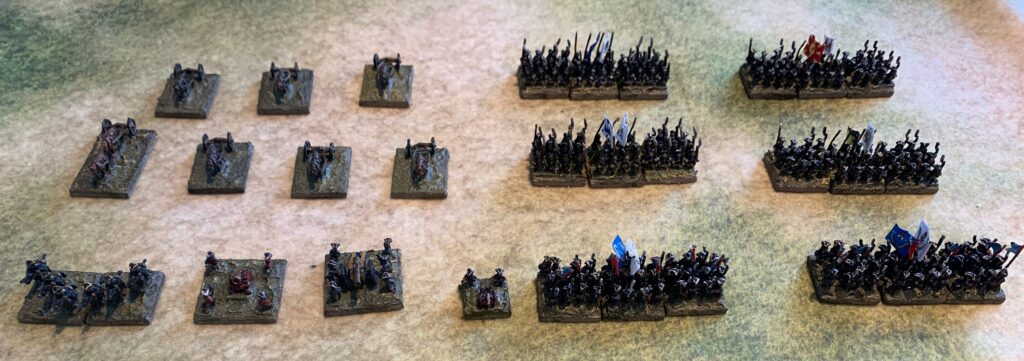
For the Swedes I painted four units from different regiments: Kalmar, Skaraborg, Västerbotten and Västmanland. Until now I have prepared two battalions from the same regiment, except for two Manning (additional draft) units. But I have the flags and in any case there is usually a bit of bathtubbing going on in my scenarios. The first two of these units are in hats, and the second two in caps (karpus). I don’t think that the karpus was as widely used as I have them in my armies, but I had bought a lot of the figures from Baccus, and they were a bit nicer than the ones in hats anyway (since then Baccus has brought out some better ones in hats).


I have plenty of Russian infantry, but there was something to be said for having a couple more guard units to beef the army up. I painted these from the Semonovsky regiment, with its blue coats. Like my two units for the Preobrazhensky regiment, I attached foil pennons to the pikes. the evidence for this is pretty thin (one of my early source book suggested it), and even thinner for their use in battle (unlike cavalry lances, where the pennons were considered to add to the psychological effect). Still it helps make the guard units special. I painted them mid-blue with a red lining, like the company standards.

The Swedish Drabants were Karl’s personal bodyguard, and like him were often in the thick of the fighting. I didn’t really need this unit, but Swedish armies were heavy in cavalry, and this unit gives me more options. They weren’t up to full regimental strength, so I’ve had to create rules for smaller, two-base units.
For artillery, I wanted a Swedish heavy gun. The Swedes weren’t usually big on artillery, which hindered mobility, but they did use 12 pdrs at Holowcyzn, and I had the metal. Why I bought a mortar I don’t know, as these were generally siege weapons, but having bought them I thought I’d better paint one up in Russian livery. The other piece in the picture is the regimental artillery for the Semonovsky regiment – which was a matter of covering a piece that I had already painted.

And finally limbers! I’ve made light (regimental) artillery and even field guns relatively mobile, without the need for limbering – so in our game players didn’t bother with limbers, as it takes a whole turn to limber up (limbers were not under military discipline). But in my next scenario there could be a lot more movement, and I had the metal away. So I painted up seven models to join the two I already had. One of these (like both the earlier ones) had two horses; the other single horse ones are there for my plentiful regimental artillery.
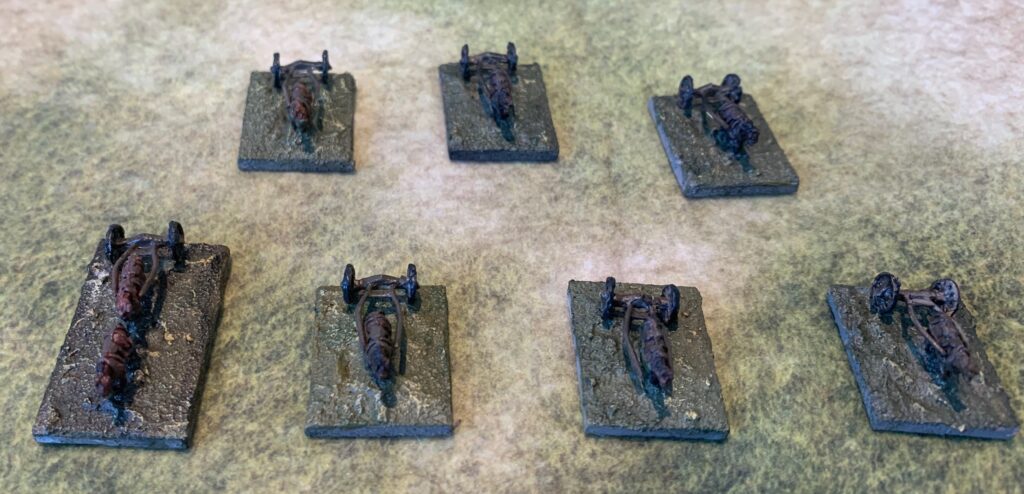
For painting technique I followed the same method as my last batch, described earlier this year. The main point of interest came at the end, when I used a rather dark wash. I started to use my Windsor & Newton peat brown ink, but this has turned thick and very red in hue with age. I tried diluted Antelope Brown (Liquitex I think), but this was very yellow – so I added some black, which is strong stuff and overwhelmed the brown. As I merrily applied it (including to the bases), I thought it enhanced the look. As it dried I the result was a bit dark – it’s not just poor photography in the pictures. I felt the need to highlight some of the yellow facings on the Swedes, and some light yellow highlighting on the bases. this proved to be quite a quick and easy process, leaving me to think that perhaps the lighter colours (facings, flesh and weapons) could be done after a dark wash (with paler base colours), using a quick dab of paint. This going down the rout of the black outline style that I have dismissed as being cartoonish. But it may be more appropriate for the tinies.
My next project is 10mm figures for Italian/Bismarck wars of 1859-71. More of that anon.
